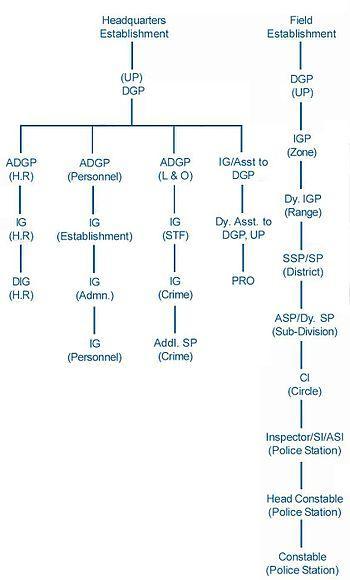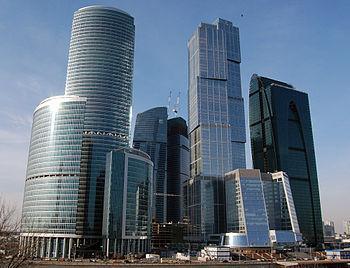
Simplified scheme of an organization (Photo credit: Wikipedia)
Organizational architecture is the totality of a firm’s:- Organizational structure or organizational space: .
- Organizational architecture or organization design: involves the creation of roles, processes, and formal reporting relationships in an organization.
1. Explain what is meant by organizational architecture.
2. Describe the different organizational choices that can be made in an international business.
3. Explain how organization can be matched to strategy to improve the performance of an international business.
4. Discuss what is required for an international business to change its organization so that it better matches its strategy.
This chapter identifies the organizational architecture that international businesses use to manage and direct global operations. Superior enterprise profitability requires three conditions:
First, the different elements of a firm’s organizational architecture must be internally consistent.
Second, the organizational architecture must match or fit the strategy of the firm—strategy and architecture must be consistent.
Third, the strategy and architecture of the firm must be consistent with competitive conditions prevailing in the market place.

Organizational structure of UPP. (Photo credit: Wikipedia)
Multinational giant Philips NV’s organizational arcitecture has evolved over time. The Dutch company, which was internationally oriented almost from the start, moved to a national organization approach during World War II. This allowed the company to tailor its product line and marketing to each national market. By the 1970s, Philips shifted toward a product division structure that established international production centers. In the mid-1990s, a new CEO implemented significant changes replacing Philips’ 21 product divisions with just seven global business divisions. This new structure was further refined in 2008 to establish three global divisions responsible for product strategy, global marketing, and production decisions.
1. What type of strategy did Philips pursue during and immediately following World War II? How did the company implement this strategy?
2. What factors prompted Philips to change its strategy and structure in the 1990s? What challenges did the company face with its new approach?
3. Consider Philips’ current approach. What type of strategy is the firm following today? Does its structure fit this new strategy?
To explore Philips’ operations in more depth, go to the company’s web site at {http://www.usa.philips.com/}.
Philips recently made some changes to its international operations. Go to {http://www.businessweek.com/news/2011-10-17/philips-to-cut-4-500-jobs-globally-seeks-eu800-million-savings.html}
Slides 14-3-14-7 What Is Organizational Architecture?
Organizational architecture refers to the totality of a firm’s organization, including formal organization structure, control systems and incentives, processes, organizational culture, and people
Three conditions must be satisfied for an organization to deliver profitability: architecture must be internally consistent; strategy and architecture must be consistent; strategy and architecture together must be consistent with the competitive environment of the firm.
Organizational structure refers to:
- the formal division of the organization into subunits
- the location of decision-making responsibilities within that structure (centralized versus decentralized)
- the establishment of integrating mechanisms to coordinate the activities of subunits including cross-functional teams or pan-regional committees
Control systems measure and evaluate managerial performance and the performance of sub-units. Incentives connect to control systems, and processes need to be consistent with the strategic objectives of the organization. Efforts to shape values and norms in an organization are intricately linked to human resource practices, especially at the selection and recruitment stages.
Slide 14-8 Dimensions of Organizational Structure
Organizational structure has three dimensions:
1. Vertical differentiation – the location of decision-making responsibilities within a structure
2. Horizontal differentiation – the formal division of the organization into sub-units
3. The establishment of integrating mechanisms – the mechanisms for coordinating sub-units
Slides 14-9-14-10 Vertical Differentiation: Centralization and Decentralization
Vertical differentiation determines where decision-making power is concentrated.
Slides 14-11-14-14 Horizontal Differentiation: The Design of Structure
Horizontal differentiation is concerned with how the firm decides to divide itself into sub-units.
The typical entrepreneurial firm begins with no formal structure. As the firm grows, when the decision load becomes too intense for one person to handle, the firm is split into functions representing value creation activities. If growth continues, eventually the complexities of size push for the re-structuring of the firm into a divisional form.
Slides 14-15-14-21 Global Expansion
When firms expand internationally, they often group all of their international activities into an international division.
Many firms that continue to expand will abandon their international division structure and move to either a:
- Worldwide product divisional structure - tends to be adopted by diversified firms that have domestic product division
- Worldwide area structure – tends to be adopted by undiversified firms whose domestic structures are based on functions
Slides 14-22-14-23 Global Matrix
The global matrix structure is an attempt to minimize the limitations of the worldwide area structure and the worldwide product divisional structure.
Slides 14-24-14-27 Integrating Mechanisms
Regardless of the type of structure, firms need a mechanism to integrate subunits.
The simplest formal integrating mechanism is direct contact between subunit managers, followed by liaisons. The next level of formal integration is temporary or permanent teams composed of individuals from each subunit. Finally, the matrix structure allows for all roles to be integrating roles.
Many firms are using informal integrating mechanisms. A knowledge network is a network for transmitting information within an organization that is based not on formal organization structure, but on informal contacts between managers within an enterprise and on distributed information systems.
Slides 14-28-14-29 Control Systems
A firm’s leaders need to ensure that the actions of subunits are consistent with the firm’s overall strategic and financial objectives. This is achieved through control and incentive systems.
There are four main types of control systems:
1. Personal controls – control by personal contact with subordinates
2. Bureaucratic controls – control through a system of rules and procedures that directs the actions of subunits
3. Output controls – setting goals for subunits to achieve and expressing those goals in terms of relatively objective performance metrics
4. Cultural controls – exist when employees “buy into” the norms and value systems of the firm
Slide 13-30 Incentive Systems
Incentives are the devices used to reward behavior. Incentives are usually closely tied to performance metrics used for output controls.
Slides 14-31-14-32 Performance Ambiguity
The key to understanding the relationship between international strategy, control systems and incentive systems is performance ambiguity – which exists when the causes of a subunit’s poor performance are not clear.
The costs of controlling transnational firms are higher than the costs of controlling firms pursuing other strategies.
Slide 14-33 Processes
Processes refer to the manner in which decisions are made and work is performed.
Slides 14-34-14-36 Organizational Culture
Organizational culture is a social construct, a system of values and norms shared among people.
Organizational culture comes from:
- founders and important leaders
- national social culture
- the history of the enterprise
- decisions that resulted in high performance
Organizational culture can be maintained through:
- hiring and promotional practices
- reward strategies
- socialization processes
- communication strategies
Managers in companies with a “strong” culture share a relatively consistent set of values and norms that have a clear impact on the way work is performed.
Social media has changed the way individuals communicate today. {http://www.businessweek.com/management/increase-your-companys-productivity-with-social-media-09272011.html}
Another Perspective: Toyota’s legendary corporate culture enabled the company to become a leader in the global auto industry. To learn more about the company’s strong culture and how it helped the company through its recent quality problems go to {http://www.businessweek.com/managing/content/jun2011/ca20110624_657612.htm}.
Slides 14-37-14-41 Synthesis of Strategy and Architecture
What is the interrelationship between the four basic strategies (localization, international, global standardization, transnational).
Firms pursuing a localization strategy focus on local responsiveness, do not have a high need for integrating mechanisms, have low performance ambiguity and control costs.
Firms pursuing an international strategy create value by transferring core competencies from home to foreign subsidiaries. They have moderate needs for control and integrating mechanisms. Performance ambiguity is relatively low and so is the cost of control.
Firms pursuing a global standardization strategy focus on the realization of location and experience curve economies. Headquarters maintains control over most decisions, the need for integrating mechanisms is high, and strong organizational cultures are encouraged.
Firms pursuing a transnational strategy focus on simultaneously attaining location and experience curve economies, local responsiveness, and global learning. Some decisions are centralized and others are decentralized, coordination needs are high, and an array of formal and informal integrating mechanisms are used.
Slide 14-42 Environment, Strategy, Architecture, and Performance
For a firm to succeed, two conditions must be met:
1. the firm’s strategy must be consistent with the environment in which the firm operates
2. the firm’s organization architecture must be consistent with its strategy
Firms need to change their architecture to reflect changes in the environment in which they are operating and the strategy they are pursuing.
Slides 14-43-14-44 Implementing Organizational Change
There are three basic principles for successful organization change:
1. Unfreeze the organization through shock therapy
2. Move the organization to a new state through proactive change in architecture
3. Refreeze the organization in its new state
Sources of inertia include:
- the existing distribution of power and influence
- the current culture
- senior managers’ preconceptions about the appropriate business model or paradigm
- institutional constraints
CRITICAL THINKING AND DISCUSSION QUESTIONS
QUESTION 1: “The choice of strategy for a multinational firm must depend upon a comparison of the benefits of that strategy (in terms of value creation) with the costs of implementing that strategy (as defined by organizational architecture necessary for implementation). On this basis, it may be logical for some firms to pursue a localization strategy, others a global or international strategy, and still others a transnational strategy.” Is this statement correct?
QUESTION 2: Discuss this statement. “An understanding of the causes and consequences of performance ambiguity is central to the issue of organizational design in multinational firms.”
QUESTION 3: Describe what organizational architecture a transnational firm might adopt to reduce the costs of control.

English: Moscow-city 2010,March (Photo credit: Wikipedia)

